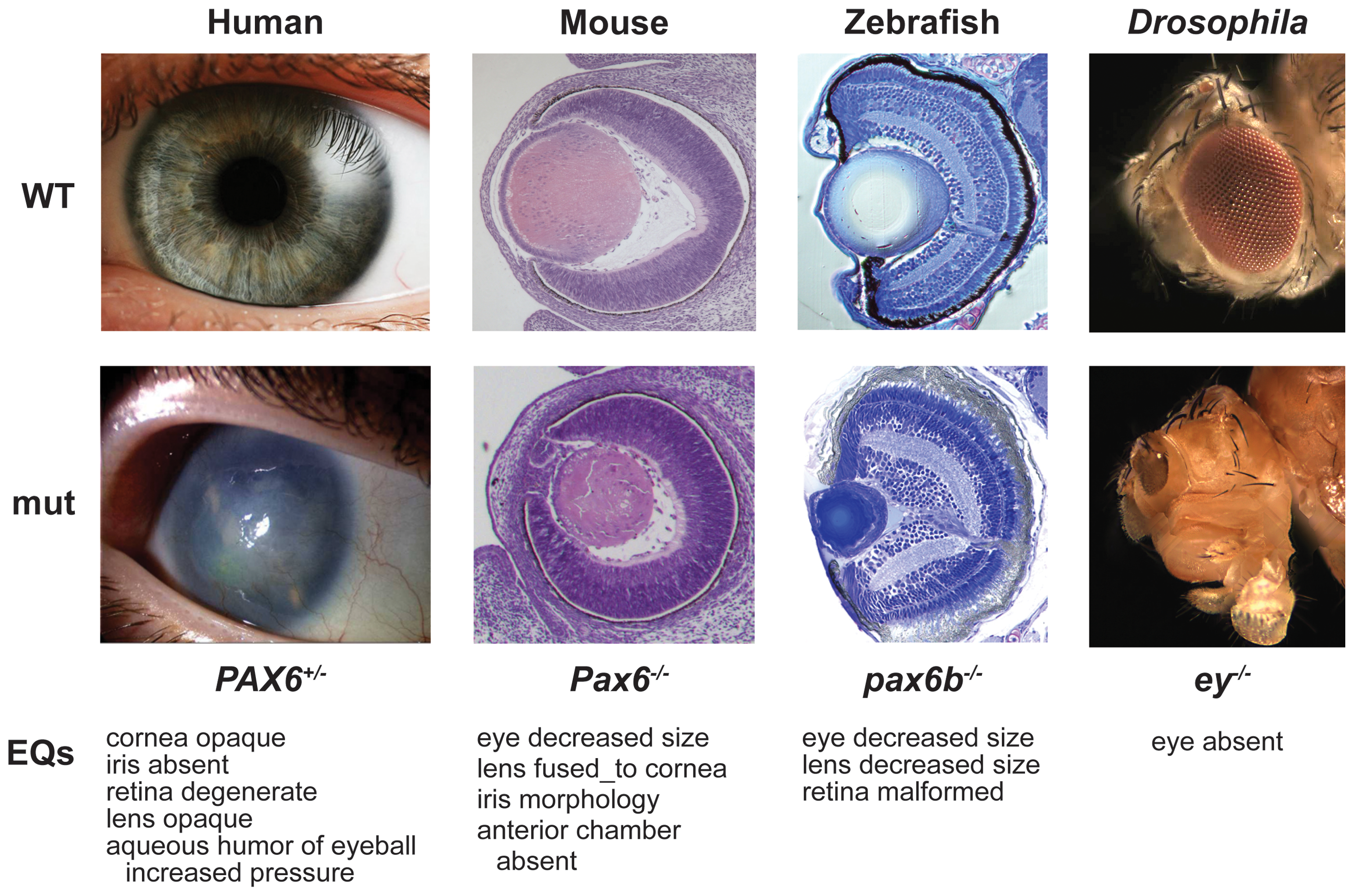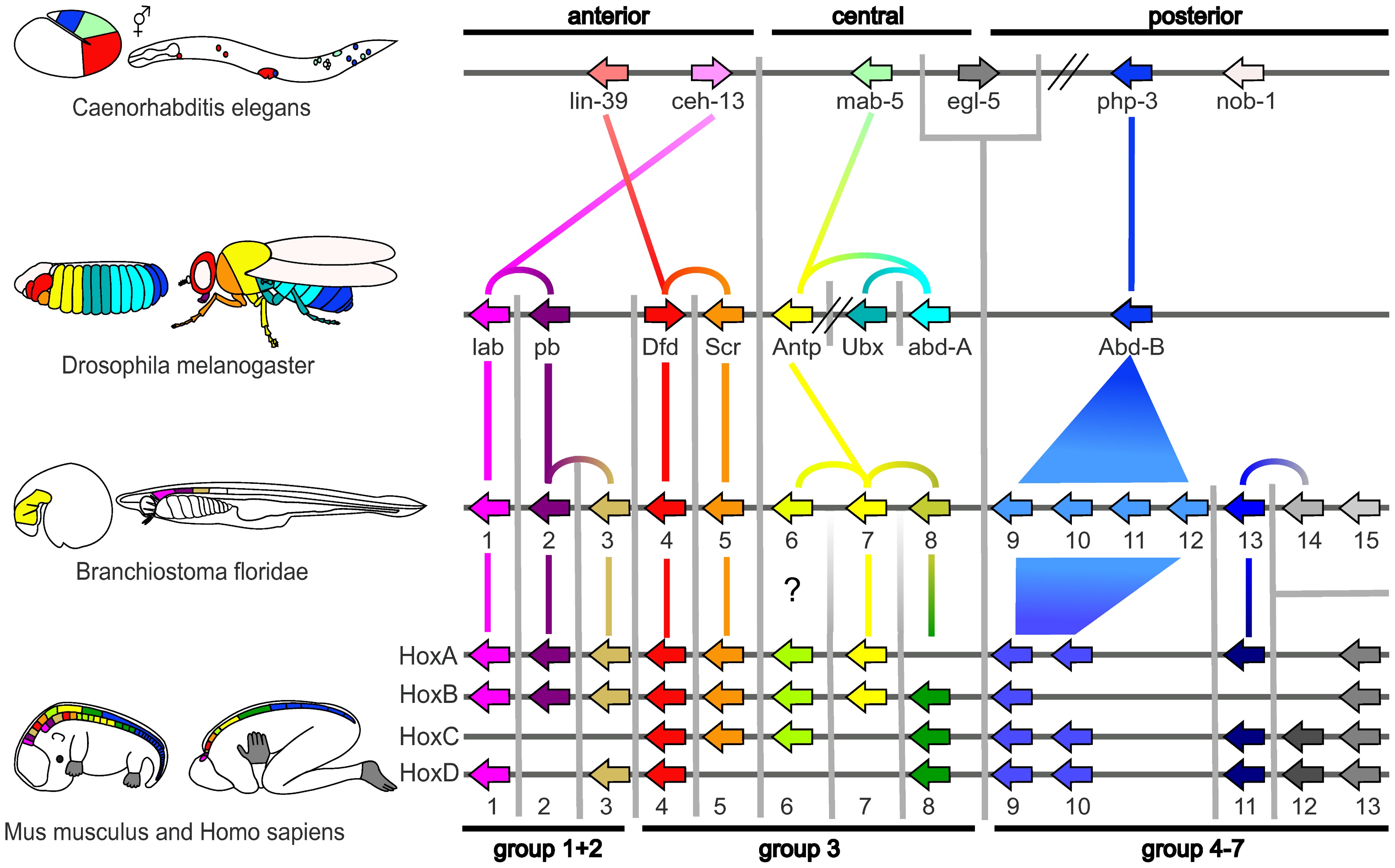|
Serial Homology
Serial homology is a special type of homology, defined by Owen as "representative or repetitive relation in the segments of the same organism."R:Webster 1913 in Webster’s Revised Unabridged Dictionary, G. & C. Merriam, 1913 Ernst Haeckel preferred the term "homotypy" for the same phenomenon. Classical examples of serial homologies are the development of forelimbs and hind limbs of tetrapods and the iterative structure of the vertebrae. See also * Deep homology * Evolutionary developmental biology Evolutionary developmental biology, informally known as evo-devo, is a field of biological research that compares the developmental biology, developmental processes of different organisms to infer how developmental processes evolution, evolved. ... References {{Reflist Evolutionary biology Comparative anatomy ... [...More Info...] [...Related Items...] OR: [Wikipedia] [Google] [Baidu] |
Homology (biology)
In biology, homology is similarity in anatomical structures or genes between organisms of different taxa due to shared ancestry, ''regardless'' of current functional differences. Evolutionary biology explains homologous structures as retained heredity from a common descent, common ancestor after having been subjected to adaptation (biology), adaptive modifications for different purposes as the result of natural selection. The term was first applied to biology in a non-evolutionary context by the anatomist Richard Owen in 1843. Homology was later explained by Charles Darwin's theory of evolution in 1859, but had been observed before this from Aristotle's biology onwards, and it was explicitly analysed by Pierre Belon in 1555. A common example of homologous structures is the forelimbs of vertebrates, where the bat wing development, wings of bats and origin of avian flight, birds, the arms of primates, the front flipper (anatomy), flippers of whales, and the forelegs of quadrupedalis ... [...More Info...] [...Related Items...] OR: [Wikipedia] [Google] [Baidu] |
Tetrapod
A tetrapod (; from Ancient Greek :wiktionary:τετρα-#Ancient Greek, τετρα- ''(tetra-)'' 'four' and :wiktionary:πούς#Ancient Greek, πούς ''(poús)'' 'foot') is any four-Limb (anatomy), limbed vertebrate animal of the clade Tetrapoda (). Tetrapods include all Neontology#Extant taxa versus extinct taxa, extant and Extinction, extinct amphibians and amniotes, with the latter in turn Evolution, evolving into two major clades, the Sauropsida, sauropsids (reptiles, including dinosaurs and therefore birds) and synapsids (extinct pelycosaur, "pelycosaurs", therapsids and all extant mammals, including Homo sapiens, humans). Hox gene mutations have resulted in some tetrapods becoming Limbless vertebrate, limbless (snakes, legless lizards, and caecilians) or two-limbed (cetaceans, sirenians, Bipedidae, some lizards, kiwi (bird), kiwis, and the extinct moa and elephant birds). Nevertheless, they still qualify as tetrapods through their ancestry, and some retain a pair of ves ... [...More Info...] [...Related Items...] OR: [Wikipedia] [Google] [Baidu] |
Vertebrae
Each vertebra (: vertebrae) is an irregular bone with a complex structure composed of bone and some hyaline cartilage, that make up the vertebral column or spine, of vertebrates. The proportions of the vertebrae differ according to their spinal segment and the particular species. The basic configuration of a vertebra varies; the vertebral body (also ''centrum'') is of bone and bears the load of the vertebral column. The upper and lower surfaces of the vertebra body give attachment to the intervertebral discs. The posterior part of a vertebra forms a vertebral arch, in eleven parts, consisting of two pedicles (pedicle of vertebral arch), two laminae, and seven process (anatomy), processes. The laminae give attachment to the ligamenta flava (ligaments of the spine). There are vertebral notches formed from the shape of the pedicles, which form the intervertebral foramina when the vertebrae articulation (anatomy), articulate. These foramina are the entry and exit conduits for the spi ... [...More Info...] [...Related Items...] OR: [Wikipedia] [Google] [Baidu] |
Deep Homology
In evolutionary developmental biology, the concept of deep homology is used to describe cases where growth and differentiation processes are governed by genetic mechanisms that are homologous and deeply conserved across a wide range of species. History In 1822, the French zoologist Étienne Geoffroy Saint-Hilaire dissected a crayfish, discovering that its body is organised like a vertebrate's, but inverted belly to back (dorsoventrally): Geoffroy's homology theory was denounced by the leading French zoologist of his day, Georges Cuvier, but in 1994, Geoffroy was shown to be correct. In 1915, Santiago Ramon y Cajal mapped the neural connections of the optic lobes of a fly, finding that these resembled those of vertebrates. In 1978, Edward B. Lewis helped to found evolutionary developmental biology, discovering that homeotic genes regulated embryonic development in fruit flies. In 1997, the term deep homology first appeared in a paper by Neil Shubin, Cliff Tabin, a ... [...More Info...] [...Related Items...] OR: [Wikipedia] [Google] [Baidu] |
Evolutionary Developmental Biology
Evolutionary developmental biology, informally known as evo-devo, is a field of biological research that compares the developmental biology, developmental processes of different organisms to infer how developmental processes evolution, evolved. The field grew from 19th-century beginnings, where embryology faced a mystery: zoology, zoologists did not know how embryogenesis, embryonic development was controlled at the molecular level. Charles Darwin noted that having similar embryos implied common ancestry, but little progress was made until the 1970s. Then, recombinant DNA technology at last brought embryology together with molecular genetics. A key early discovery was that of homeotic genes that regulate development in a wide range of eukaryotes. The field is composed of multiple core evolutionary concepts. One is deep homology, the finding that dissimilar organs such as the eyes of insects, vertebrates and cephalopod molluscs, long thought to have evolved separately, are contr ... [...More Info...] [...Related Items...] OR: [Wikipedia] [Google] [Baidu] |
Evolutionary Biology
Evolutionary biology is the subfield of biology that studies the evolutionary processes such as natural selection, common descent, and speciation that produced the diversity of life on Earth. In the 1930s, the discipline of evolutionary biology emerged through what Julian Huxley called the Modern synthesis (20th century), modern synthesis of understanding, from previously unrelated fields of biological research, such as genetics and ecology, systematics, and paleontology. The investigational range of current research has widened to encompass the genetic architecture of adaptation, molecular evolution, and the different forces that contribute to evolution, such as sexual selection, genetic drift, and biogeography. The newer field of evolutionary developmental biology ("evo-devo") investigates how embryogenesis is controlled, thus yielding a wider synthesis that integrates developmental biology with the fields of study covered by the earlier evolutionary synthesis. Subfields ... [...More Info...] [...Related Items...] OR: [Wikipedia] [Google] [Baidu] |



